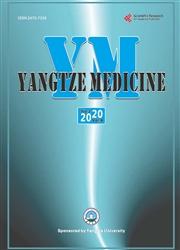CIB1 as a potential diagnosis and prognosis biomarker in uveal melanoma
引用次数: 0
Abstract
BackgroundUveal melanoma (UVM) is the most common primary intraocular tumor in adults. However, identification of the effective biomarker for the diagnosis and treatment of UVM remain to be explored. Calcium and integrin-binding protein 1 (CIB1) is emerging as an important mediator in carcinogenesis and tumor progression. In the present study, we aim to determine the contribution of CIB1 in the diagnosis of UVM.MethodsImmumohistochemical staining is used to detect the CIB1 expression level, while Gene Expression Profiling Interactive Analysis 2 (GEPIA2) and UALCAN online tools were used to further analyze patient survival and CIB1 correlation genes in UVM. Integrative analysis using STRING and GeneMANIA predicted the correlated genes with CIB1 in UVM.ResultsTo the best of our knowledge the novel observations identified in the present study reveal that CIB1 expression level in UVM was significantly enhanced when compared with that in paracancerous tissues. A higher CIB1 expression level resulted in a significant worse disease free survival as well as overall survival. Moreover, survival probability of patients with UVM was associated with body weight and gender of the the patients. The correlated genes with CIB1 in UVM, and the similarity of the genes in UVM expression and survival heatmap was verified. Furthermore, Gene ontology enrichment analysis revealed that CIB1 and its correlated genes are significantly enriched in ITGA2B-ITGB3-CIB1 complex, regulation of intracellular protein transport and regulation of ion transport.ConclusionsTaken together, our novel findings suggested that CIB1 might be a potential diagnostic predictor for UVM, and might contribute to the potential strategy for UVM treatment by targeting CIB1.# These authors contributed equally to this workCIB1作为葡萄膜黑色素瘤的潜在诊断和预后生物标志物
背景葡萄膜黑色素瘤(UVM)是成人最常见的原发性眼内肿瘤。然而,用于诊断和治疗UVM的有效生物标志物的鉴定仍有待探索。钙和整合素结合蛋白1(CIB1)正在成为致癌和肿瘤进展的重要介质。在本研究中,我们的目的是确定CIB1在UVM诊断中的贡献。方法使用免疫组织化学染色来检测CIB1的表达水平,同时使用基因表达谱交互分析2(GEPIA2)和UALCAN在线工具来进一步分析UVM中患者的生存率和CIB1相关基因。使用STRING和GeneMANIA的综合分析预测了UVM中与CIB1相关的基因。结果据我们所知,本研究中确定的新观察结果表明,与癌旁组织相比,UVM中的CIB1表达水平显著增强。较高的CIB1表达水平导致显著较差的无病生存率以及总生存率。此外,UVM患者的生存概率和患者的体重和性别有关。验证了UVM中与CIB1相关的基因,以及UVM表达和存活热图中基因的相似性。此外,基因本体富集分析显示,CIB1及其相关基因在ITGA2B-ITGB3-CIB1复合物、细胞内蛋白质转运的调节和离子转运的调节中显著富集。结论综合来看,我们的新发现表明,CIB1可能是UVM的潜在诊断预测因子,并可能通过靶向CIB1为UVM治疗的潜在策略做出贡献。#这些作者对这项工作做出了同样的贡献
本文章由计算机程序翻译,如有差异,请以英文原文为准。
求助全文
约1分钟内获得全文
求助全文

 求助内容:
求助内容: 应助结果提醒方式:
应助结果提醒方式:


